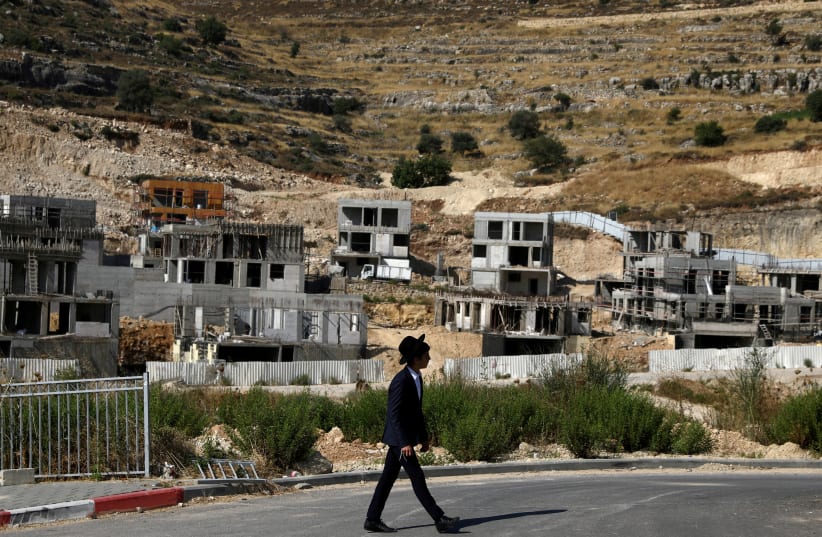In the 1920s, the Zionist administration used the expression “another dunam, another goat” to describe the step-by-step process of building the settlement. One hundred years later, after the establishment of the state, and 50 years after the return to Judea and Samaria, our perception has not changed.
The Yesha Council was quick to oppose the government’s decision to approve the construction of 1,000 Palestinian housing units in Area C. They were also quick to express disappointment with the number of building permits granted to Jewish cities and towns in Judea and Samaria. Their frustration and condemnation are the result of a narrow view, one that ignores the first step of Israeli sovereignty in all parts of Area C and assumes responsibility for what is happening to the Palestinians who live there.
Their view fails to recognize Israel’s triumph that a (Democratic) American administration did not condemn the decision of the Israeli government to build in Judea and Samaria, and most probably, secretly helped to draft it. This is the recognition and validation that we have been waiting for – even this less sympathetic administration understands that we are here to stay.
As the mayor of Efrat, I have been included in many development planning meetings. I have seen map after map, lines that overlap with numbers that are often obscure and difficult to comprehend. Simulations help us to begin imagining what the buildings will look like, and drones provide clear images of ongoing construction. Suddenly everything becomes clear. Lines become roads, sidewalks, electricity lines and drainage systems. Squares become homes and gardens, as if someone built a neighborhood out of Lego. The bird’s-eye view enables us to see the whole picture.
The Yesha Council used to have the ability to rise above the moment and look down on what is happening. After all, the whole purpose of the council is to promote construction in Judea and Samaria, to strengthen the cities and towns, to bolster our hold on our ancestral land, and to enhance the international legitimacy of the settlement enterprise. I partner with them to achieve these goals. But they have lost their broader vision, and as a consequence they have begun to miss opportunities, seeing only half-empty glasses.
Any analysis of the situation must include this context. The decision to approve Palestinian construction in Area C while simultaneously approving construction in the Jewish towns took place while the director of the CIA was visiting Israel. This is a true achievement for the settlement movement and the entire State of Israel.
The Clinton administration systematically condemned all construction in Judea and Samaria, acted to curtail it, and challenged our legitimacy. The Bush administration was also not a big fan of our construction. The eight years of the Obama era brought building freezes and more delegitimization. The Trump administration brought a welcome change of perception, but we were always left with “What will happen post-Trump?”
In that light, let us reexamine the US decision to recognize Israel’s plan to develop approximately 2,000 housing units, without condemnation, appeal or attack from the Biden administration. We have waited for this moment for over a quarter of a century! We have wished for the day when Washington would not claim that the settlements are an enemy of peace, when they would stop shouting every time we tried to build. The day has finally come! Why are we not celebrating this monumental achievement that goes back to the days of Trump and Netanyahu, but remains alive and well even under new leadership?
At the same time we must examine the decision to approve the construction of 1,000 housing units for Palestinians in Area C. The Yesha Council and other organizations have repeatedly asked the government to take responsibility and exercise sovereignty in Area C. The government has finally responded, explaining where building is permitted and where it is not. Jewish towns deserve to build in order to address natural growth and the challenges of the housing crisis, and our Palestinian neighbors deserve the same. And since we are the sovereign, it is our responsibility to grant them these rights. Of course the decision to approve Palestinian construction means that we must also fight and oppose illegal construction. Until now the Palestinians had no lawful way to build, and so fighting illegal building was impossible.
Last night’s decision marked Washington’s acceptance of our new government. Our democratic coalition government, which consists of left-wing parties, such as Meretz, Labor and others, is demonstrating that both Jews and Palestinians in Judea and Samaria are here to stay, and that it is time to learn to work together.
Historian Yaakov Hisdai once said, “Strategy is a method of achieving goals, and the more alternative ways it offers, the better.” I have written about the strategic goals of the settlement movement and the Yesha Council. The problem remains that the council fails to see the broader picture, the bird’s-eye view. Council members oppose these decisions despite the fact that they promote the very goals of the Yesha Council. We can’t allow the settlement movement to become one that does not miss an opportunity to miss an opportunity. This happened during their campaign to apply sovereignty “in Ma’aleh Adumim first.” It happened with Trump’s Deal of the Century. And it is happening now. Only if we look from a bird’s-eye view will we understand that these decisions will benefit us all.
The writer is mayor of Efrat.
